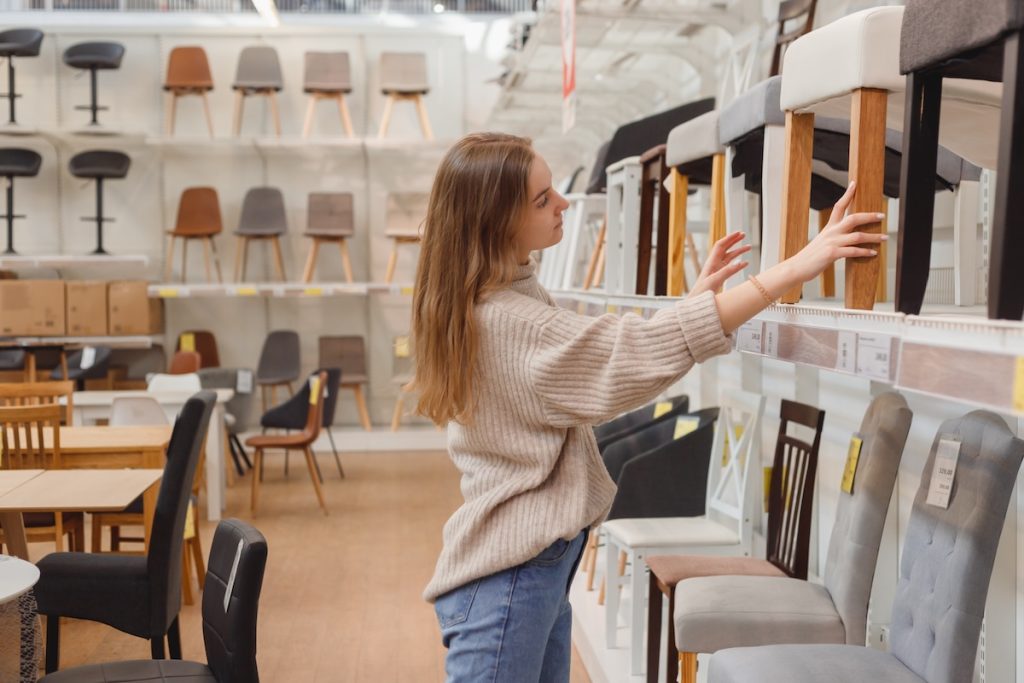In terms of technology adoption, the retail and ecommerce industry has always been ahead of the curve.
In the ecommerce market, digital transformation has not only aided entrepreneurs in reaching out to high-value customers, but it has also aided in generating a steady stream of cash.
However, as the industry prepares for another transformative decade with next-generation technologies such as AR/VR, IoT, AI/ML, and so on, retailers and ecommerce players must continue their innovation and disrupt the market through initiatives such as ecommerce app development, or risk being disrupted by these technologies.
Have you heard of Kilowott? We think you should know more about us. We help retailers and businesses sell their products online and via mobile.
Retail Technology Trends or Technology Use Cases That Can Transform Retail
A feature as simple as a 360-degree view of products on an eCommerce app/website, for example, may become obsolete when users are enabled to experience products in real time via augmented reality.
Who would want to link their debit/credit cards with one-tap payments?
The possibilities are infinite with the internet retail business bringing a myriad of new features such as product visualization, tailored product catalogs, try-on tools, and so on.
As a result, exploiting the full potential of disruptive technologies is a need for survival.
In this piece, we’ll go over some of the most impressive retail technology trends and use cases that can disrupt retail

AI/ML
According to a recent salesforce poll, 69 percent of respondents believe that individualized customer service influences their loyalty.
ML algorithms can help retailers adapt their content by discovering patterns in massive amounts of structured and unstructured data, such as images and text, acquired through data collection systems.
These algorithms can take into account a user’s UX preferences, such as color, image intensity, favored style, and activity history, among other things. The ecommerce software can then be tailored to your consumers’ individual tastes.
AI/ML Use Cases in Retail:
- Cashier-free Stores
Store robotization will reduce queues, reduce the number of human personnel, and save money on operating costs.
Checkout-free stores have already been implemented by Amazon AI.
When you take something from the shelf or put it back, the Amazon Go and Just Walk Out Shopping system reacts.
When you leave the store with your purchases, your Amazon account will debit your account. Amazon intends to open more AI-powered stores, such as Amazon Go, where just six to twenty human employees are required. - Customer Service Chatbots
AI chatbots boost consumer service by improving search, sending notifications about new collections, and suggesting related products. If a buyer has already purchased a black hoodie, a chatbot can recommend a snapback to complete the appearance.
Eighty percent of brands around the world are now utilizing AI chatbots or plan to do so in the near future. To assist its clients in navigating their collections, Tommy Hilfiger and Burberry have launched chatbots. - In-store Assistance
Retailers also invest in technologies that assist customers and store employees during the shopping experience. For example, we recommend replacing paper price tags with smart shelf tags in their stores.
On the displays, this technology also gives video commercials, nutritional information, and promotions. We can also build you an autonomous in-store robot, who assists consumers in finding what they need in the store in a variety of languages.
At the same time, thanks to real-time monitoring features, it aids inventory management. - Adjustments in Price
AI applications in retail outlets can aid in the pricing of products by showing the anticipated results of various pricing schemes. Systems collect information on other items, promotional efforts, sales numbers, and other data in order to carry out this task.
Business owners can showcase the best deals to attract new clients and increase revenue. For example we can harness Artificial Intelligence to optimize pricing and remain flexible in capacity to modify rates and promotions based on the data they collect.
- Predicting Price
The price of a product is forecasted based on demand, seasonal trends, characteristics, the release date of new models of the same item, and other factors.
Its most obvious application is in the travel business, but it might also be utilized in retail.
Consider an app or service that allows your customers to see how the price of a product will change in advance. This is possible and simple to implement with Artificial Intelligence. A price prediction feature could aid in client retention.
However, in the retail industry, predictive analytics and machine learning could achieve much more than just a pricing prediction. - Logistics & Supply Chain Management
Every year, retailers lose over $1.1 trillion due to poor execution in this sector. It is possible to eliminate leftovers and out-of-stock situations.
In the retail supply chain, AI can be used for restocking, which involves calculating demand for a certain product based on past sales, location, weather, trends, promotions, and other factors.
With the help of AI, retailers can improve their stock forecasting and restocking in multiple shops. This can result in a reduction of up to 30% at in-store shelf gaps. - Product Categorization via Machine Learning
ML can be used to classify over a million items from a variety of merchants. Machine Learning-based systems tag goods and arrange them into distinct categories for clients looking for a specific type of product.
Vendors may just submit an image of the things they want to sell, and computer vision-based Machine Learning retail software can recognize, classify, and even propose a price.
Using Machine Learning models, an online platform can process over 900 requests per second, increasing sales with relevant information. - Visual Search
Visual Search systems powered by Artificial Intelligence allow customers to upload images and find similar products based on colors, shapes, and patterns.
If retailers adopt image recognition technology, an accuracy of 95% can be achieved. For example, The IR technology of American Eagle uses Visual Search — which not only helps people get the same or similar clothes but also suggests what would go well with it. - Voice Search
Walmart, Tesco, Kohl’s, Costco, and a slew of other major retailers use Google or Amazon AI to give customers an easy and rapid voice search experience.
Customers may now ask Alexa for the item they want and the status of its delivery without having to type anything. In reality, voice search on mobile is used by 27% of people worldwide, and 52% prefer it over mobile apps and websites because it is more convenient. - Virtual Fitting Rooms
This is yet another fantastic application worth mentioning. Customers can save time and find the right outfit with all the elements precisely matched in a matter of minutes by using virtual fitting rooms.
In 20 seconds, a virtual fitting kiosk can scan a customer and measure 200,000 points on his/her body.
Levi’s, Gap, Brooks Brothers, Old Navy, and other retailers implemented these scanners in their stores and saw huge sales boosts. - Customer Satisfaction Tracking
Artificial Intelligence (AI) can detect a customer’s moods during the purchase process. For this purpose, Walmart has already implemented facial recognition technology. Each checkout lane has cameras mounted, and if a customer is irritated, a business representative will speak with him or her.
Mood tracking will undoubtedly aid in the development of stronger client relationships. - Customer Prediction On Behavior
An Artificial Intelligence platform can be built that allows business owners to apply behavioral economics to each consumer and develop a unique approach.
This platform can evaluate each customer’s psychology and emotions in order to boost sales. The algorithm analyses the emotional responses and behavior of customers throughout prior purchasing experiences in order to generate the best pricing offers for each visitor.
Dynamic Pricing Strategy For Retailers
ML systems can discover new demands and trends by identifying and learning new data patterns.
ML models may be used by online retailers to monitor profitability, automate pricing management, forecast pricing trends, analyze customer purchasing behavior, and compare pricing to competitors.
Retailers can recommend the correct offer at the right price and present real-time discounts based on the warehouse’s current situation. This increases sales and reduces inventory.
We can implement a predictive analytics solution to highlight price fluctuations and analyze future price trends. Through the predictive analytics solution, the client raised revenues from 20% to 32% while also achieving optimal product marketing and sales.
Many individuals were reminded of how easy it is to comparison shop on the internet over the last year as homebound consumers completed online orders for anything from groceries and detergent to yoga mats and laptops.
A shopper can find out which retailer provides a particular item for the best price with just a few clicks.
Pricing will become an increasingly essential competitive strategy for retailers in the post-pandemic age, as the trend to e-commerce is projected to continue.
Dynamic pricing, in particular, is likely to become one of the key characteristics that will distinguish winners in the future retail scene.
Simply put, Dynamic Pricing is the (completely or partially) automated price change.
Dynamic pricing is standard in the travel business for airline tickets, hotel rooms, and ride-sharing services. Amazon has long been a leader in dynamic pricing in e-commerce; the corporation reprices millions of items every few minutes.
Dynamic pricing isn’t just for travel firms or e-commerce behemoths, and it doesn’t always necessitate cutting-edge software that adjusts the price of every product numerous times per day.
Traditional merchants, too, can benefit greatly from merchant-informed, data-driven algorithms that recommend price modifications for specific products on a regular basis.
Despite the competitive advantage that dynamic pricing can provide, only a small percentage of omnichannel businesses have implemented it.
Some companies are only now beginning to look into the possibilities of dynamic pricing. The key things to remember when adopting dynamic pricing for retailers are,
1. Out-the-door Price Versus Item Price
Shoppers don’t merely consider the item’s ticket price when making a purchase. Instead, they consider the whole out-the-door price, which includes taxes, shipping costs, service charges, and any additional fees.
As a result, your dynamic pricing strategy must support your chosen value proposition. That includes considering not only ticket prices but also specials, bundles, personalized offers, as well as shipping times and costs.
Customers don’t always want their new furniture delivered right away, so a furniture shop explored reduced delivery fees and longer delivery periods on the theory that they’d prefer to get their new dining table on a Saturday than in the middle of the week.
The shop discovered that a longer wait had no effect on conversion rates, giving them the freedom to manage deliveries for capacity and cost. Offering the option to wait until the weekend for specific things and then passing on the savings to the client proved to be a successful strategy to increase conversions.
2. Consumer Expectations Need Consideration
Certain items are better candidates for price modifications on a more regular basis than others.
Pricing of on-trend fashion goods, such as plain T-shirts or underwear, can fluctuate from week to week in the garment industry, but prices of basics (such as plain T-shirts or underwear) should be more constant (Customers who have been purchasing white crew socks from your stores for years should not be surprised by the price when they return to purchase another pair).
Consider the length of the purchasing cycle and the expectations of consumers for each product set.
Prices of large-ticket items that are frequently examined by consumers—such as televisions or sofas—should remain reasonably steady, as rapid price fluctuations may irritate the conscientious buyer who has been researching for months.
All dynamic-pricing algorithms, in our opinion, should alert merchants, and most price adjustments advised by algorithms should be accepted by merchants before being implemented.
Retailers can avoid the consumer wrath that comes with seemingly opportunistic pricing increases in this way. Retailers who hiked cleaning product costs, for example, were accused of taking advantage of the COVID-19 outbreak and gouging customers, resulting in a loss of customer trust and loyalty.
3. Test Them & Refine
Because dynamic pricing is both an art and a science, a test-and-learn strategy is essential to getting it right. To reduce risk, create a ‘war kitty with your CFO and agree on the direction of pricing changes throughout the early test phases. Begin with a single product category or area for pilots.
Assume that the first few price moves will fail; develop a system for monitoring progress, assessing impact, and making quick adjustments. Before migrating to automated price-change approvals, spend time with merchants during the initial tests and collaborate with them to design future steps.
Price analysts collaborated with merchants at a high-end accessories retailer, for example, to implant the logic of the company’s pricing strategy into algorithms.
Following that, the retailer conducted in-market testing to determine two crucial inputs. The first was the retailer’s discovery of the limits of substitution for very similar products across price tiers—for example, most buyers interested in a $350 item upgraded to a comparable item priced at $399, but not when the more costly item was priced at $400.
The second factor was how customers reacted to bundled services.
Customers, for example, paid only attention to the price of the bundle when the shop packaged two items generally purchased together for an out-the-door price of $499; they didn’t notice price adjustments on the individual items.
The retailer’s new pricing approach resulted in a more than 50 percent rise in absolute earnings before interest, taxes, and depreciation, in the test categories, as well as an automated price-setting system for 500,000 SKUs.
4. Plan The Journey
Understand your existing competitive position in the market and consumers’ price perceptions of your brand as a first step.
Then, create a roadmap for your dynamic pricing journey. Given the current state of most retailers’ data, infrastructure, tools, and talent, achieving the end-state aim will almost probably necessitate a phased strategy to gather best-in-class data, infrastructure, tools, and talent.
Expect to arrive in a few days. Set and manage internal expectations; show immediate victories to help the organization move forward.
IoT (Internet of Things)
In the ecommerce & retail industry, inventory management has become critical to increasing profit margins.
According to an IRI survey, more than 70% of online customers would hunt for an item elsewhere if it was unavailable rather than wait for it to return in stock.
As a result, true gains come from keeping your eCommerce stocks at levels that assure business continuity while also keeping them below levels that drain the company’s financial reserves.
When used in conjunction with a mobile channel, next-generation technologies such as AI, ML, and IoT can increase revenue.
AI methodologies such as time series prediction and reinforcement learning systems are being used to assess user demand, supplier backorders, warehouse optimization, forecasting error reduction, idle stock minimization, and other inventory management issues, resulting in more efficient and profitable inventory management.
Innovating in-store experiences
IoT in shopping malls and stores provides retailers with the data they need to improve the design of their stores.
Use data from in-store experiences to improve store layout, reduce time spent in fitting rooms, establish an intelligent suggestion system, and, where possible, replace human employees with automated technology.
Without a question, Amazon Go is the most well-known and successful example of large-scale IoT implementation for transforming the in-store experience.
Iot retail cashless checkout
By bringing IoT to physical stores, you’ll be able to cut maintenance costs, increase the speed of service, and eliminate human error.
Increased store management efficiency
The Internet of Things and cloud-based technologies empower a range of solutions that improve the efficiency of business operations in retail. These include:
- Automated packaging services
- SKU accounting
- IoT drones for inventory monitoring
Implementing IoT for retail management and as part of warehouse technology reduces shrinkage and makes inventory navigation easier, as well as supporting many warehouse automation benefits.
Reduce the number of employees required to run a store
Automating jobs with robot technology and network solutions is one of the most effective ways to reduce the number of people involved in shop management. Just a few years ago, what seemed like something right out of a science fiction movie was suddenly routine.
Target supermarkets frequently deploy robot staff to check shelves and locate missing items. Lowe’s Innovation Lab created OSHBot to assist users in finding specific items and answering their questions.
Needless to say, even widespread use of IoT in the retail sector will not completely eliminate the necessity for human labor. Instead, staff will be free to focus on jobs that aren’t as repetitive or dull as they once were, but that still require top-notch human help.
IoT applications in retail
Now that we’ve covered the major advantages of the Internet of Things in the retail business, let’s look at some of the most effective and well-known examples. Here are a few examples.
Tracking your location
The Internet of Things addresses one of the most serious problems in retail: delivery reliability. The technology has the potential to improve operational efficiencies and logistics transparency.
IoT technology can be adopted to track its items and staff’ movements both in the warehouse and in transit.
Predictive equipment maintenance
Electric appliances that malfunction (for example, refrigerator units) can cause significant reputational and financial damage, as well as the waste of dozens of product units.
Store managers use the potential of IoT in retail operations management to stay up to date on store upkeep and take a proactive approach. The device can provide real-time equipment monitoring and alert managers in the event of a potential problem.
Predictive equipment maintenance has already been deployed in transportation, manufacturing, and utilities (outside of retail).
Inventory management
Switching to smart retail employing IoT technologies has a number of advantages, including automated inventory management.
Product orders, inventories, and reordering are all automated by managers, who also collect and evaluate popularity data and forecast consumption. All of this translates to increased precision and significant cost savings.
There are a plethora of inventory-focused IoT solutions available, including:
- A drone system that monitors inventory in real time and delivers alarms if there are no more units available.
- Next, a RFID antenna on the Intel Retail Sensor Platform checks the number of items on the sales floor and warns a store manager if the number is low. The platform is simple to set up and operate, with a plug-and-play interface.
With the adoption of RFID-based technologies, a buyer can check in real time to see if the requested item is in stock at the local store.
Mall traffic analysis and shopper mapping. Managers gain a better grasp of the most popular zones and products by deploying IoT sensors throughout the store.
Heat maps of user activity can help you figure out where to put things for sale, how to optimize store space and layout, and track and record shopping trends over time.
The store camera and IoT can be used to build heat maps of a store’s layout and convey the data to a dashboard in the form of accessible insights.
- Smart shelves
When Kroger, the largest grocery chain in the United States, tested over 2,000 smart shelves in 2016, the technology was extensively adopted in the retail business. Since then, the demand for smart shelving systems has grown, prompting Perch and AWM to introduce smart shelf management and analytics solutions.
An RFID tag, an RFID reader, and an antenna are the three basic components of a smart shelf. A microchip on a tag is transferred to an IoT platform through an antenna, where it is processed by a reader.
The data acquired by smart shelves during the day will be shared with a store manager later in the day in order to provide customer-related insights and stock statistics.
When a stocker wanders around the store with a smartphone and a digital shopping list, the phone vibrates to alert them if a needed item is on the shelf nearby. A shelf in need of extra items will light up for enhanced visibility.
- Personalized alerts
Hyper-personalization based on IoT is frequently employed in retail. Geofencing and IoT beacons are two tried-and-true methods of attracting customers’ attention. Here are a few retail IoT examples that involve these technologies:
IoT beacons from Starbucks – People passing by a Starbucks would receive updates about new coffee brews or promotions, as well as invitations to visit.
According to RT Insights, the iBeacon campaign has shown to be highly effective once it has been implemented.
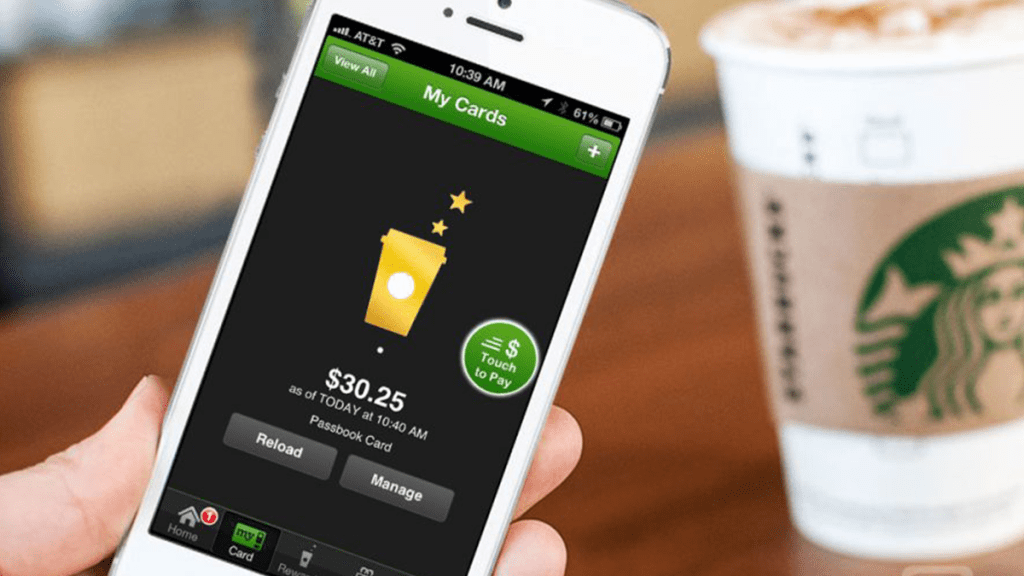
- RFID Tags
By converting clothing labels into RFID tags, Avery Dennison customized shopping experiences. These tags provide shoppers with VIP access to perks in stores all across town. Customers of Avery Dennison are notified when they are close to a store that is running a deal.
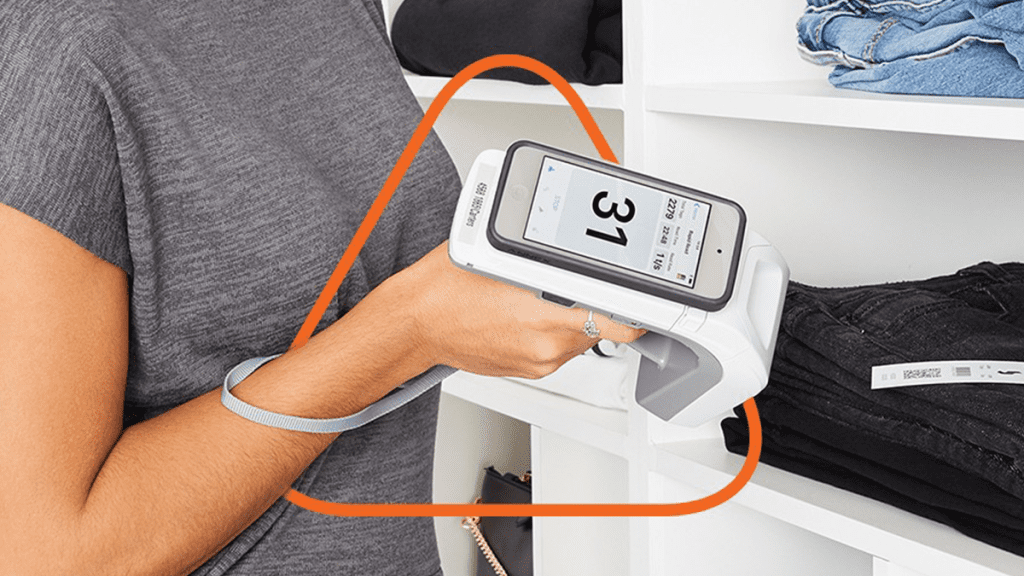
What are the advantages of the Internet of Things in the retail industry?
After a detailed examination of the Internet of Things in the retail industry, consider the advantages of incorporating the latest technology into your own retail operation.
- Waste Loss Reduction
Integrating Internet of Things (IoT) solutions into retail operations can help save money by reducing product waste and loss. Smart retail IoT applications improve inventory and delivery processes by adding a layer of traceability and visibility, as well as delivering better precision and predictability. - Efficiency of In-store Staff
Managers can better understand consumer journeys by combining cameras, retail sensors, and monitoring technology with advanced analytics, such as identifying an impatient or confused shopper or determining the causes for an abandoned shopping experience. - Retail analytics powered by IoT assist employees in making proactive decisions and adjusting the shopping experience.
- Optimized Product Placement
Thanks to thorough reports based on sensor data, IoT helps store managers to discover premium retail spaces, test the placement of different items in those regions, and establish the most efficient layout. - Retail Management and Tracking
IoT allows store managers to keep track of how many products are on the shelves and in inventory, allowing them to refill stocks on time.
Technology can also aid in the automation of financial management and taxation, decreasing the chance of errors and resulting costs. - Online and In-store Omnichannel Experience
Effective IoT strategies for businesses aid in the creation of a seamless transition between online and in-store interactions.
Different Internet of Things applications in the retail business (personalized offers, customer journey monitoring, etc.) enable customers to create an omnichannel experience by integrating in-store experience with online digital solutions.
AR/VR
AR has the potential to become a popular mode of engagement for both products and category exploration. A product’s label contains relatively little information about the product. So, by allowing consumers to scan a product, you may give them access to a variety of information about the thing, such as product kind, payment options, pricing, and so on.
By allowing customers to assess if an item they want to buy is suitable through a virtual placement in a selected region, AR/VR development is functioning as a driver for personalization, transparency, and convenience of buying.
With a particular “See it in your room” feature, Kilowott can assist furniture retailers in developing an AR-driven Native Android and iOS Mobile App that can allow users to visualize things in their own space. In fact, we have already done something like this. Check out this cool case study
Users might even take a picture of it and send it to their friends and family for feedback.
Big Data and Data Analytics
Big data can provide marketers and e-store owners with detailed information on customer interactions and preferences, which can be gathered through consumer engagement channels such as social media, browser searches, questionnaire forums, email campaigns, and other means, and then used for specific business goals.
This is accomplished by using big data to effectively and automatically capture precise client wants and feedback.
Huge amounts of data, on the other hand, might be difficult to handle due to issues such as slow loading times, redundant data sets, and so on.
These can be eliminated by implementing dependable big data solutions.
Even before the epidemic, retail, particularly online purchasing, was in desperate need of a makeover.
For instance, there’s a well-known reason why consumers rarely buy furniture online: It’s because judging the size of a couch, end table, or dresser without seeing it in person might be difficult.
However, merchants are increasingly employing augmented reality to allow customers to virtually project furniture into their homes, allowing them to determine whether an item is the proper size and design for their area.
Similar things are now possible for things like glasses, jewelry, clothes, shoes, or anything else shoppers want to buy.
Here are our ten real-world use cases for Augmented Reality (AR) and Virtual Reality (VR) in the retail industry
- In its physical stores, Nike uses augmented reality and virtual reality. Customers can scan things like shoes or apparel for information, or they can enter a virtual reality world to experience the various phases in Nike’s supply chain to better understand how and where products are manufactured.
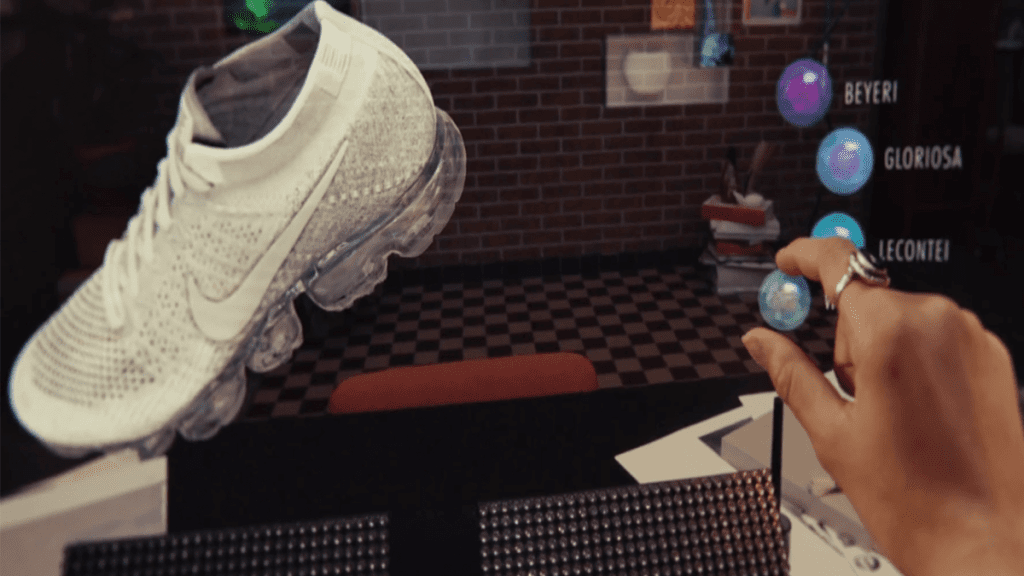
- IKEA has created The Place App, which allows customers to utilize augmented reality and their smartphone camera to place furniture products in their homes and see how they will look in their environment.
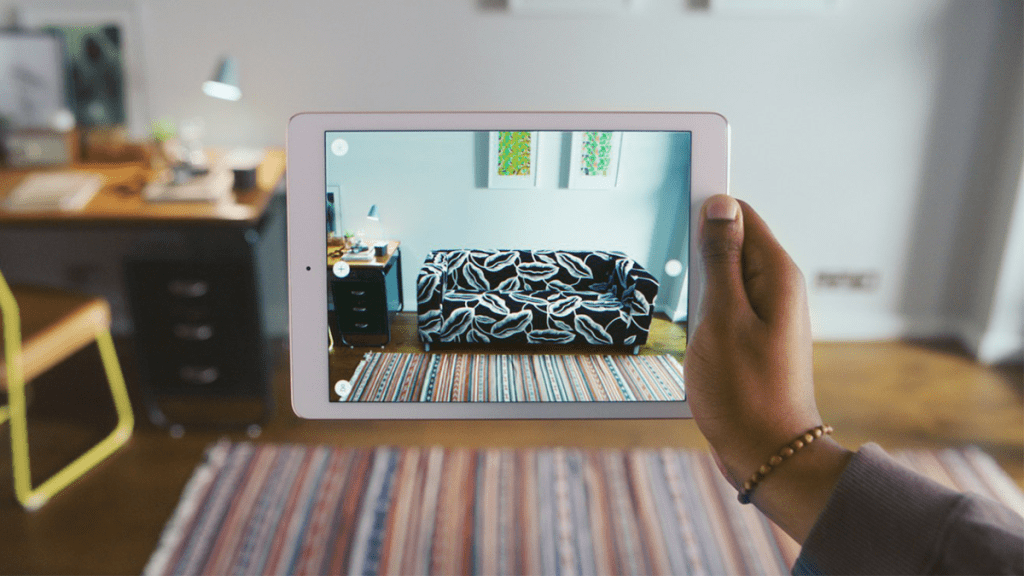
- Customers of Warby Parker may use AR to put on glasses from the comfort of their own homes, allowing them to find the perfect frames.
- L’Oreal now offers augmented reality-powered makeup try-on experiences (https://www.loreal.com/en/articles/science-and-technology/l-oreal-modiface-brings-ai-powered-virtual-makeup-try-ons-to-amazon/), delivered in collaboration with Facebook.
Customers can experiment with the world’s leading beauty brands, such as Maybelline, L’Oréal Paris, Lancôme, Giorgio Armani, Yves Saint Laurent, and Urban Decay.
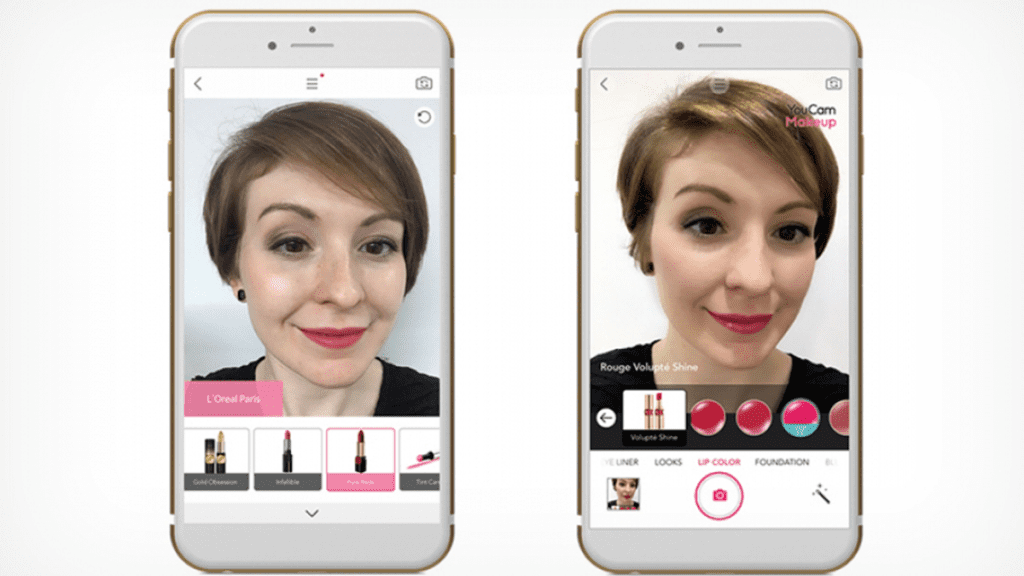
- Luxury watch retailer WatchBox uses AR to let customers try on different sizes of watches to pick out the perfect one and make sure it looks great on their wrist.
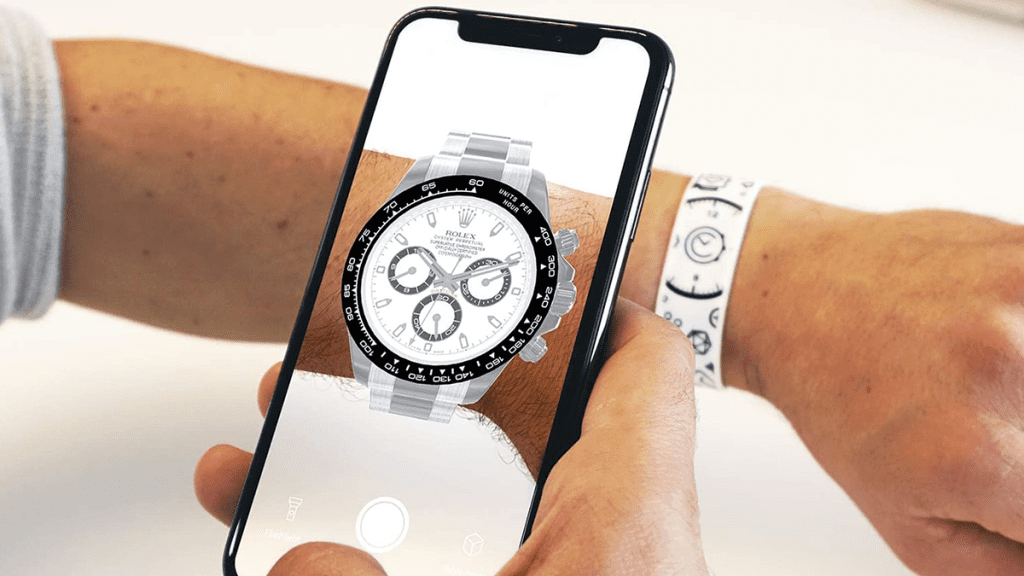
- FaceCake has created an Infinite Virtual Closet that allows users to create and build a dream closet with aspirational wardrobe and jewelry items, then virtually try them on. The AI-driven shopping platform also gives shoppers curated style recommendations.
Imagine being able to virtually try on earrings and actually being able to see them dangling from your ears!
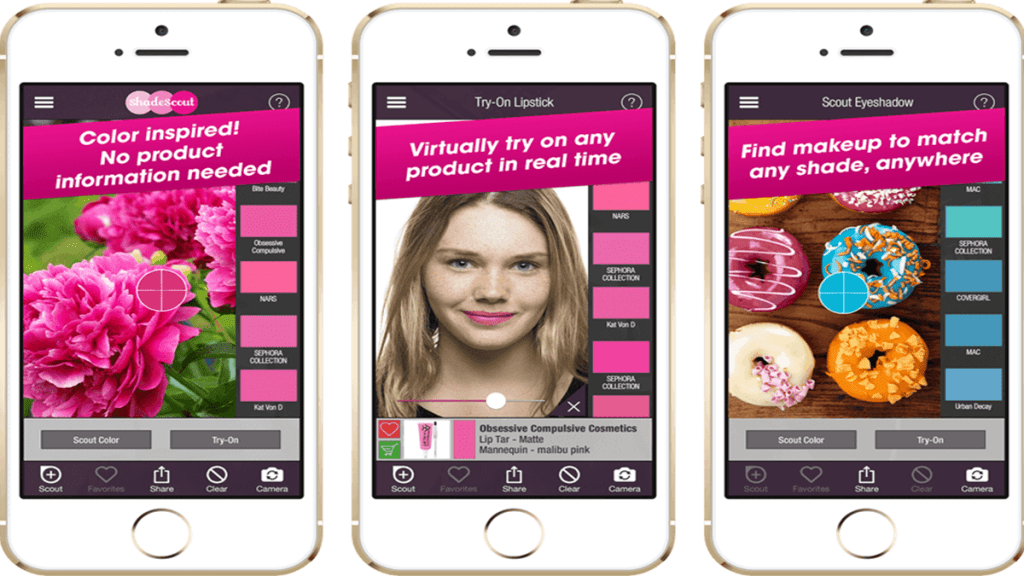
- BMW’s augmented reality experiences allow car shoppers to go into showrooms and customize cars with different colors or styles using their tablets or phones. Or they can put on virtual reality goggles and experience what it’s like to drive the cars, so they understand their options and can make the perfect choice for their new vehicle.
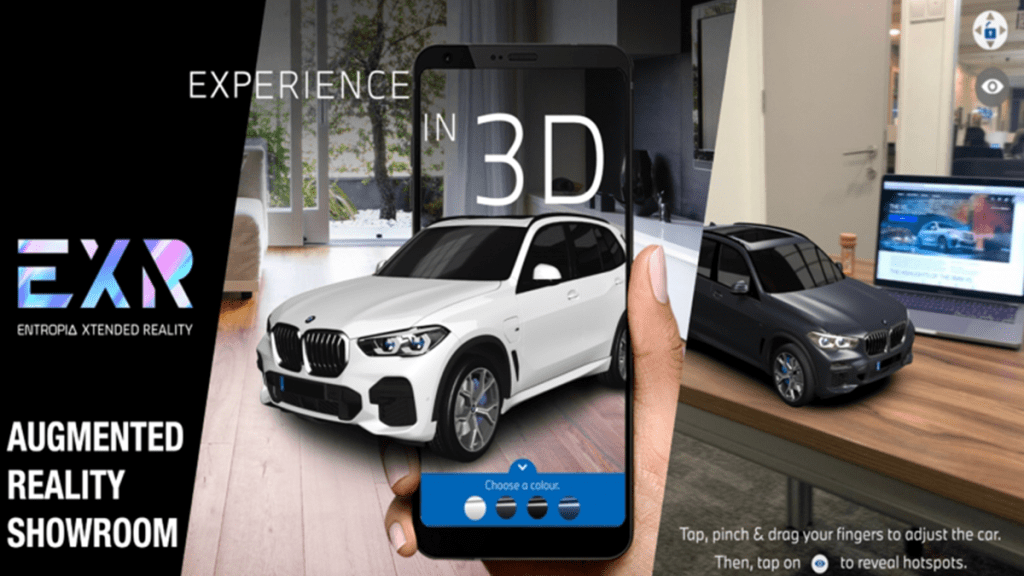
- Apple brought their physical retail stores home during the pandemic using AR technology to showcase their products. Shoppers can use AR Quick Look for new iPhone or iMac models, so you can see what they look like in your space or in your hand.
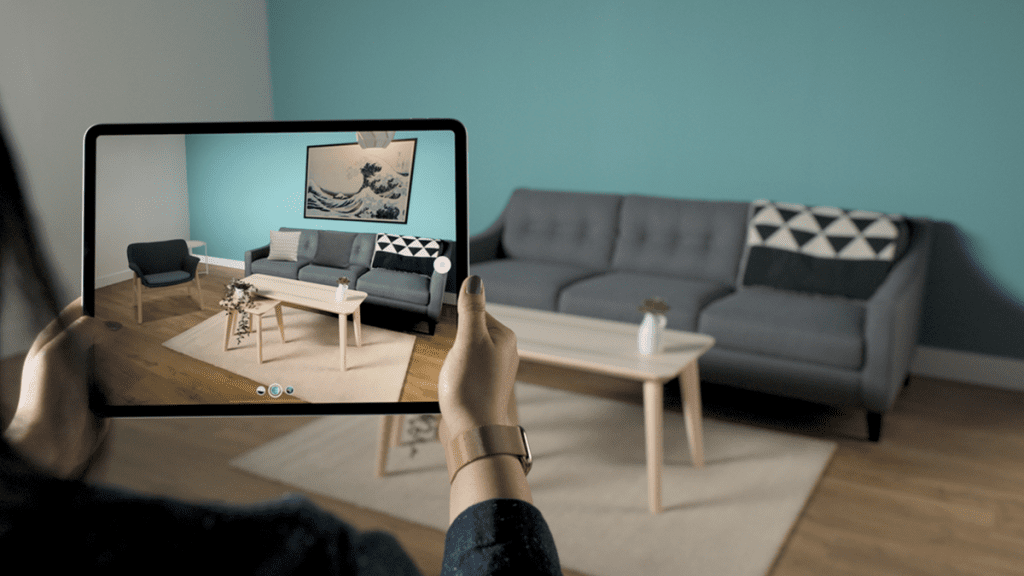
- Toms, the shoes and apparel company, has installed virtual reality systems in hundreds of their stores across the world to give customers the ability to transport themselves to Peru. Toms donates $1 of every $3 they make to local people who play a part in their supply chain – and customers can experience the impact of that initiative via virtual reality.()
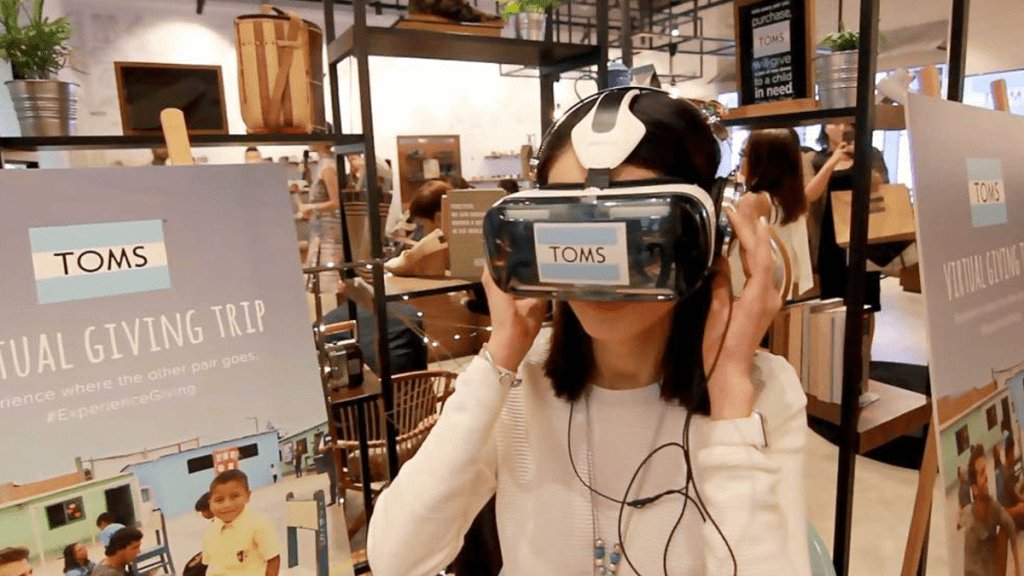
- Asos, a fashion company (), now has simulated models on its website that you can dress up with augmented reality to examine how different outfits look on various body shapes. We will most certainly have our own avatars in the future, allowing us to have our bodies scanned and try out our own avatars in the digital world.
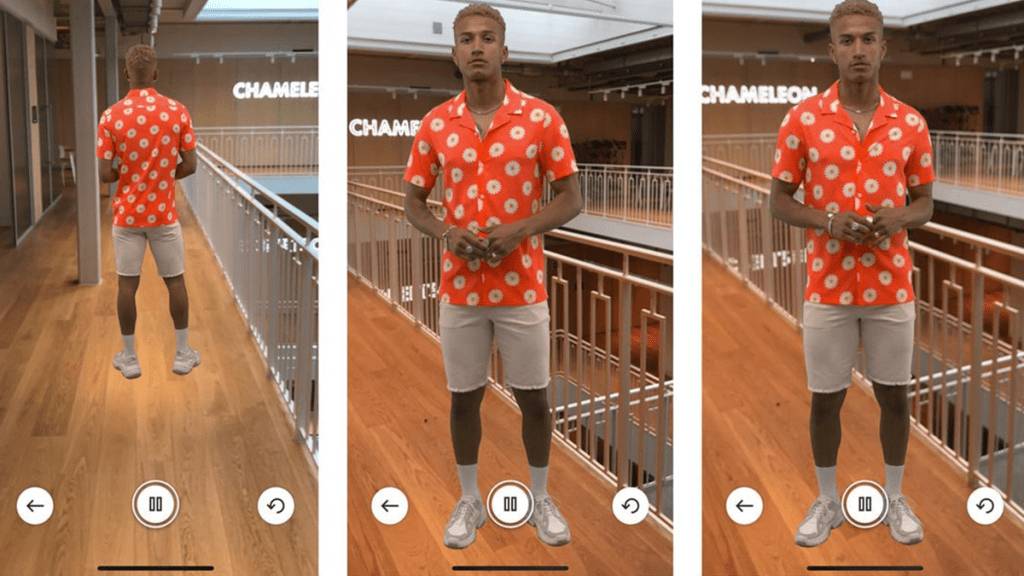
Digital Control Tower
According to a recent Gartner poll, supply chain complexity is a critical concern for 85 percent of retailers.
An IoT, Big Data, and Machine Learning (ML)-based digital In-app control tower can predict and avoid future supply chain interruptions for your retail firm.
Through an efficient orchestration of operational dashboard and prescriptive warnings, it may assist give insight across retail units, geographies, and functions, as well as facilitate cooperation among stakeholders, employees, and customers.
By transforming raw and unstructured data into meaningful insights, it may also assist merchants in making proactive decisions in terms of buying, asset positioning, maintenance, and tracking.
Retailers and CPG manufacturers will have to continue to address the key dynamics of increased demand volatility and the step change in omni-channel purchases, which have created a number of challenges, such as ensuring product availability for high customer service and executing on risk management strategies due to demand surges and supplier disruptions.
A number of basic drivers, in particular, are posing a threat to the landscape:
Consumer preferences are shifting, with a shift toward fresh, natural/organic/healthy, convenience foods, and locally based items while also seeking for value.
The requirement to provide numerous store designs and omni-channel alternatives has resulted in a considerable shift in channel preferences for retailers.
For CPG makers, volumes are shifting from modern trade (hypermarkets/supermarkets) to discounters and e-commerce, for example. The requirement to respond to those changes while preserving profits, service, and efficiencies through optimal inventory, sourcing, transportation, and fulfillment planning.
“The growth of the internet and the trend toward value are anticipated to put further pressure on grocers’ profits,” according to a recent McKinsey research, “particularly considering that the entire market may decline once restaurants return.”
Supply chains are experiencing unprecedented levels of variability, uncertainty, and complexity as a result of these revolutionary transformations in consumer behavior.
To successfully restructure their companies, retailers are being forced to challenge the current quo and improve their supply chain competencies.
CPG companies are scrambling to deepen their ties with consumers, and in some cases, to avoid using stores entirely. There’s a growing recognition that running a great supply chain necessitates a commitment to use data and sophisticated analytics to make smart, fact-based decisions while constantly upgrading product offers, supply chain strategies, and execution skills.
Retailers and CPG manufacturers have realized that they must replace their old operating model with a digital operating model in order to analyze, optimize, and assess complicated decisions swiftly before acting.
Getting to this new operating model is a transformative journey that has a lot of potential in terms of giving you more confidence and control over your business outcomes.

No matter how well retailers and CPG manufacturers plan their product portfolio or assortments available across both physical stores and the online channel, forecast demand using sales or shipment history with internal drivers (promotions, digital coupons, social media campaigns) as well as external drivers (weather, interest rates, new housing starts), and carefully procure and place inventory, they constantly face operational issues during execution.
Promotions and markdowns do not yield incremental sales as planned, there are subtle changes in consumer preferences across channels, suppliers have material or component availability issues and transportation bottlenecks disrupt and cause targets to be missed and lead to a host of issues like out-of-stocks, too much inventory and dissatisfied consumers.
“Everyone has a strategy until they get struck in the mouth,” stated legendary boxer Mike Tyson.
Even if the planning organization has the best laid plans, the operational environment’s inherent unpredictability necessitates constant course corrections, including scenario planning and appraisal of numerous competing alternatives.
Numerous retailers and CPG manufacturers are now looking at Control Towers and S&OE capabilities to address a multitude of supply chain blind spots including unexpected supply shortages, network bottlenecks, response to disruptions and big changes in what consumers are purchasing and where they are purchasing.
Control Towers support in sensing demand fluctuations as well as supply disruptions in real time, translating that into various risks – the risk of poor customer service or the risk of lower revenues or the risk of lower margins due to expensive course corrections.
The most advanced Control Towers diagnose the root causes of supply chain failures and prescribe a number of corrective actions along with their costs and tradeoffs.
The deployment of cognitive control towers that are both analytical and operational is becoming the new best practice.
They not only provide end-to-end visibility from consumer purchases to supplier shipping, but they also provide advice on what to do in response to difficulties, allowing users to choose from a variety of options and take action.
The 3Ws of decision-making are addressed by these control towers:
- What went wrong?
- What is the most likely scenario?
- What steps should be taken?
Retailers and CPG manufacturers are increasingly having difficulty obtaining the information they require to answer these questions during both planning and execution.
This is costing them billions of dollars in missed sales, customer unhappiness, increased supply chain expenses, extra inventory, and decreased productivity. Not to mention the negative impact on the environment as a result of (global) supply networks’ inefficient use of finite resources.
Making Control Towers Cognitive
Artificial Intelligence (AI) and Machine Learning (ML) approaches have emerged as key enablers of the 3Ws, giving control towers cognitive capabilities.
If the item a customer wants isn’t available, if an order promised for store pickup isn’t ready on time, or if additional promo volume can’t be fulfilled, AI/ML will be of limited use.
Diagnostic capabilities are provided by machine learning algorithms, which can detect the root causes of fulfillment failure.
Items not in stock and needing to be ordered from a regional DC with insufficient lead times, workforce unavailable for orders, missing items at pick locations, limited pickup window duration for customers, supply disruptions at import DCs, excess number/variety of items in the order, or insufficient retail store or warehouse space could all be root causes for service failure.
What is the most likely scenario?
The predictive capabilities of machine learning are appropriate for analyzing the effects of forward-looking demand drivers to forecast a demand surge in a specific location, which could be caused by local events, social media buzz, unexpected weather, or competition supply problems.
What steps should be taken? Prescriptive recommendations with an action or a sequence of actions can be provided by AI/ML to various roles in the supply chain to assure fulfillment, execution, manufacturing, or properly modified plans.





